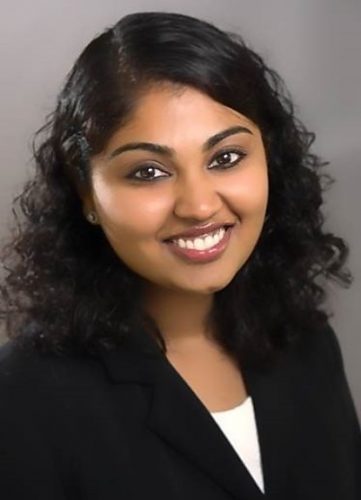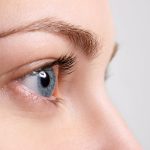People considering laser vision correction have several options to choose from: PRK, LASIK and SMILE. How can you decide what’s best for you? Specialist Nandini Venkateswaran, MD, weighs in.
When people want better vision without having to rely on glasses or contact lenses, they might seek out laser vision correction surgery, also known as corneal refractive surgery. During a consultation, patients will hear about their different options, including PRK, LASIK and SMILE. The outcomes are excellent for all these procedures, explained Nandini Venkateswaran, MD, a member of the Cornea and Refractive Surgery Service at Mass Eye and Ear. So how does one decide? Focus asked Dr. Venkateswaran to describe the procedures to help patients on their path towards better vision.
Why might someone consider laser vision correction?
Say you’ve grown up your whole life wearing glasses or contacts… it’s because you have what’s known as refractive error. Without glasses or contacts, your vision is fuzzy, so you have a prescription that corrects it. What PRK, LASIK and SMILE do is actually change the shape of the cornea, which is the clear windshield of your eye, and help you in a way put your glasses prescription right onto your eyes.
What is the consultation like?
During a consultation, we take many measurements and photos of the eyes. For example, looking at the patient’s eye, we will determine if his or her prescription is myopia (nearsightedness) or hyperopia (farsightedness) with or without astigmatism (where your cornea, which is supposed to be a sphere, is shaped more like a football).
There are three ways we correct a patient’s eye prescription with laser refractive surgery. At Mass Eye and Ear, we offer PRK, which is our oldest procedure, LASIK, and then SMILE, which is our newest procedure. All of these procedures are excellent; they just differ based on how we perform the procedure and whether or not your eyes are good candidates for these procedures. Each procedure is safe, but it’s worth noting that there are some risks of eye dryness after surgery along with experiencing mild glare and halos at night.
We also can determine during a consultation if a patient is not a candidate for laser vision correction. Patients that have congenital corneal dystrophies, scarring on the cornea, or conditions like keratoconus or ectasia, where the cornea is already weakened, will likely not be good candidates. That’s why it’s important to have a full eye exam with a doctor specializing in refractive surgery.
There is a fee for this initial consultation and patients should expect to be at the office for about three hours.
What is PRK?
During PRK (Photorefractive Keratectomy), we remove the skin of the eye and use a laser to change the shape of the cornea, and then allow the skin cells to grow back on their own. Patients usually need to wear a bandage contact lens on their eyes for a week to let them heal. Vision will fluctuate for about a week or two while the eyes recover, then by four to six weeks, patients should be seeing very well. Patients who often benefit most from PRK are ones that have thin corneas or who may not be candidates for the other procedures.
What is LASIK?
In LASIK (Laser-Assisted In-Situ Keratomileusis), a laser is used to make a hinged flap on the cornea while another laser changes its shape, similar to PRK. One benefit of LASIK is instead of waiting up to two weeks for the skin cells to heal, we just lay the LASIK flap back down to seal itself at the time of surgery; so, the turnaround recovery time is within one or two days. Vision will progressively improve over the next two to four weeks. Outcomes are comparable between LASIK and PRK. There is also a newer “topography-guided” option for LASIK and PRK.
What is topography-guided LASIK/PRK?
Just like everyone’s hands are different, our corneas can also be different per eye, per person, and we all have subtle imperfections on the corneal surface. Topography-guided LASIK or PRK uses specialized planning software to map out these corneal imperfections, while also taking into account the prescription we are treating, to provide a more customized treatment approach during refractive surgery.
For example, after taking measurements, we may find that a patient has a larger degree of astigmatism or higher order aberrations in the eye. These patients may benefit from a customized topography-guided treatment. Early studies show that some patients may obtain as good as 20/15 vision and a reduced risk of glare and halos at night. The procedure itself is the same as conventional LASIK or PRK but the software used and calculations that get programmed in the laser by the surgeon are different.
Some patients may not be candidates for topography-guided treatments because they may not have many imperfections to treat or the shape of their eyes don’t require it. Patients can discuss if they are a candidate with their surgeon and should know that there is an additional out-of-pocket cost for this treatment option.
What about SMILE?
Approved by the Food and Drug Administration in 2016, SMILE (Small Incision Lenticule Extraction) is a procedure in which we don’t remove any skin cells or create a flap but instead create what’s called a lenticule, which looks like a small contact lens-shaped disc of tissue, inside the cornea. Then, we remove the lenticule through a small incision. Patients do not experience any pain that might come with skin removal and do not need to wait for a flap to heal. Patients who have myopia and/or astigmatism are great candidates for SMILE and I often will suggest SMILE for patients with higher prescriptions.
Anything else to keep in mind before surgery?
Regardless of the procedure a patient chooses, each takes about 10 to 15 minutes per eye. All procedures are done in the office setting. I usually joke with patients it takes them longer to fill out forms than the actual procedure. It’s the recovery that’s the differentiating factor. The scientific literature suggests that all procedures have excellent outcomes. And so, it’s really like matchmaking – you figure out what procedure works best for each patient based on the shape of their corneas and their prescriptions.
We always want to develop a plan A, B and C with a patient. For example, in case where we’re not able to successfully perform SMILE, for instance due to suction loss or patient movement during the procedure, we may have to stop it and convert to LASIK. Similarly, if we are not able to complete LASIK, we can opt to perform PRK. These circumstances are very rare but can happen.
One other caveat I tell all my patients is when they get older, they will need reading glasses. Once a patient turns age 40-45, the lenses insider their eyes change shape, so readers will be necessary one day regardless of procedure.
Any other considerations?
Lastly, if you are not a candidate for laser vision correction, there are surgical options to correct your prescription. Implantable collamer lenses, or ICLs, are also excellent options for patients who may have very high prescriptions or corneas not amenable to laser refractive surgery. Lastly, for patients who are older than 50 and wanting refractive surgery, a clear lens exchange with implantation of a premium intraocular lens, may be a more suitable option. Both these procedures are performed in the operating room. It is important to discuss all these options with your eye doctor.
From July 1 until September 30, 2022, Mass Eye and Ear is pleased to offer $1,000 off laser vision correction surgery. Call 1-833-LASER-99 to schedule your consultation.
*$1,000 total or $500/eye. Offer may not be combined with any other offer, discount or promotion. Surgery must take place by December 1, 2022.
About the Expert:
 Nandini Venkateswaran, MD, is a member of the Cornea and Refractive Surgery Service at Mass Eye and Ear. She specializes in complex cataract surgery, corneal transplantation, laser refractive surgery, corneal cross-linking, anterior segment reconstruction and diagnosing and treating conditions of the eye’s surface. She sees patients at our Waltham location and Main Campus in Boston.
Nandini Venkateswaran, MD, is a member of the Cornea and Refractive Surgery Service at Mass Eye and Ear. She specializes in complex cataract surgery, corneal transplantation, laser refractive surgery, corneal cross-linking, anterior segment reconstruction and diagnosing and treating conditions of the eye’s surface. She sees patients at our Waltham location and Main Campus in Boston.


would love to hear about eye site correction. Thank you.